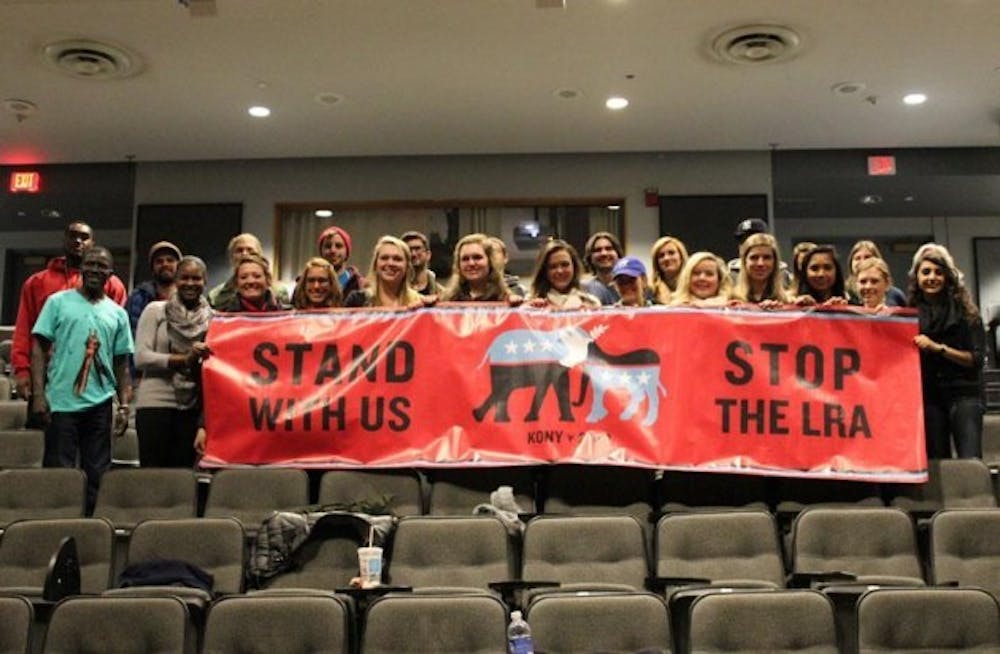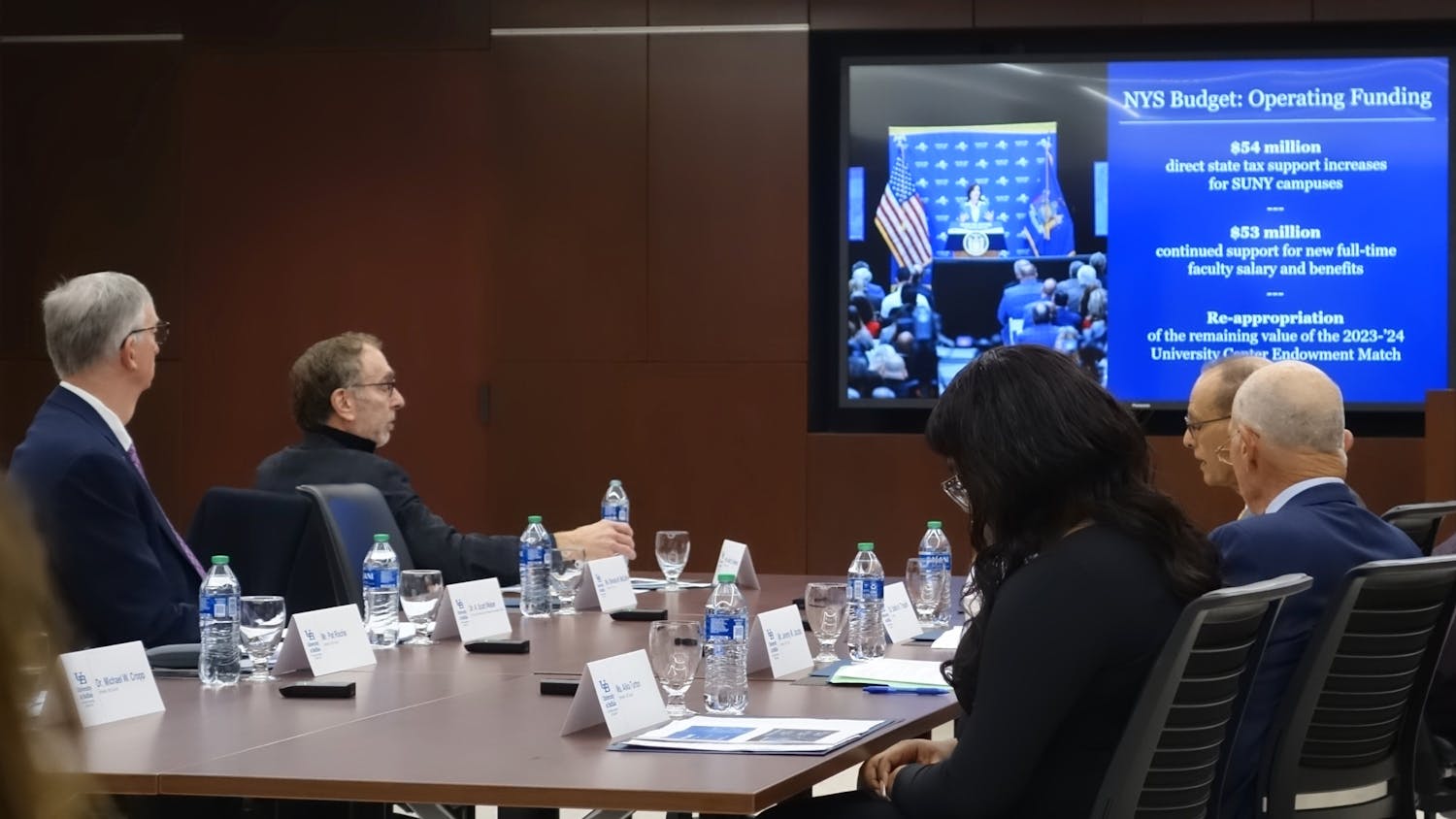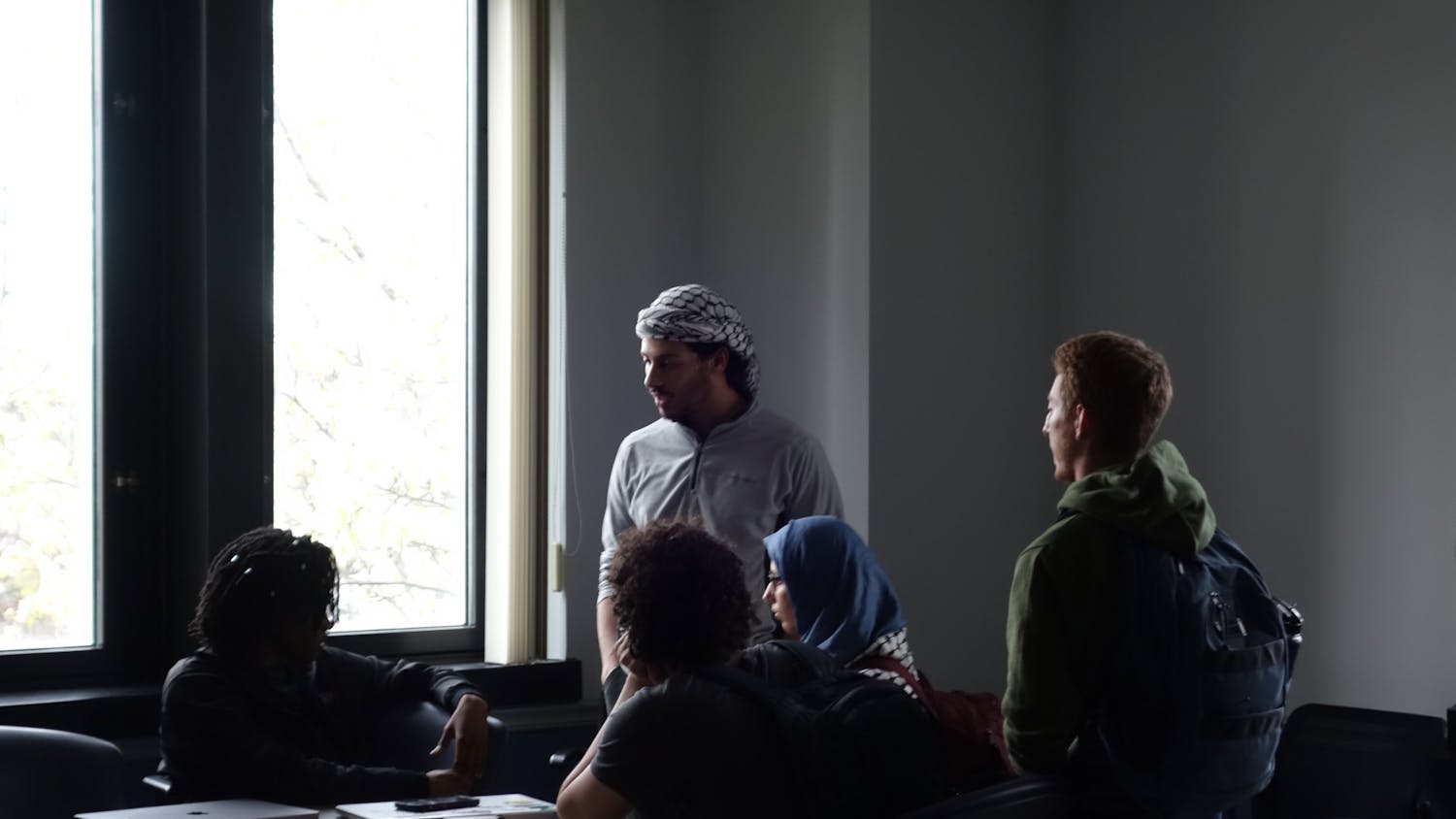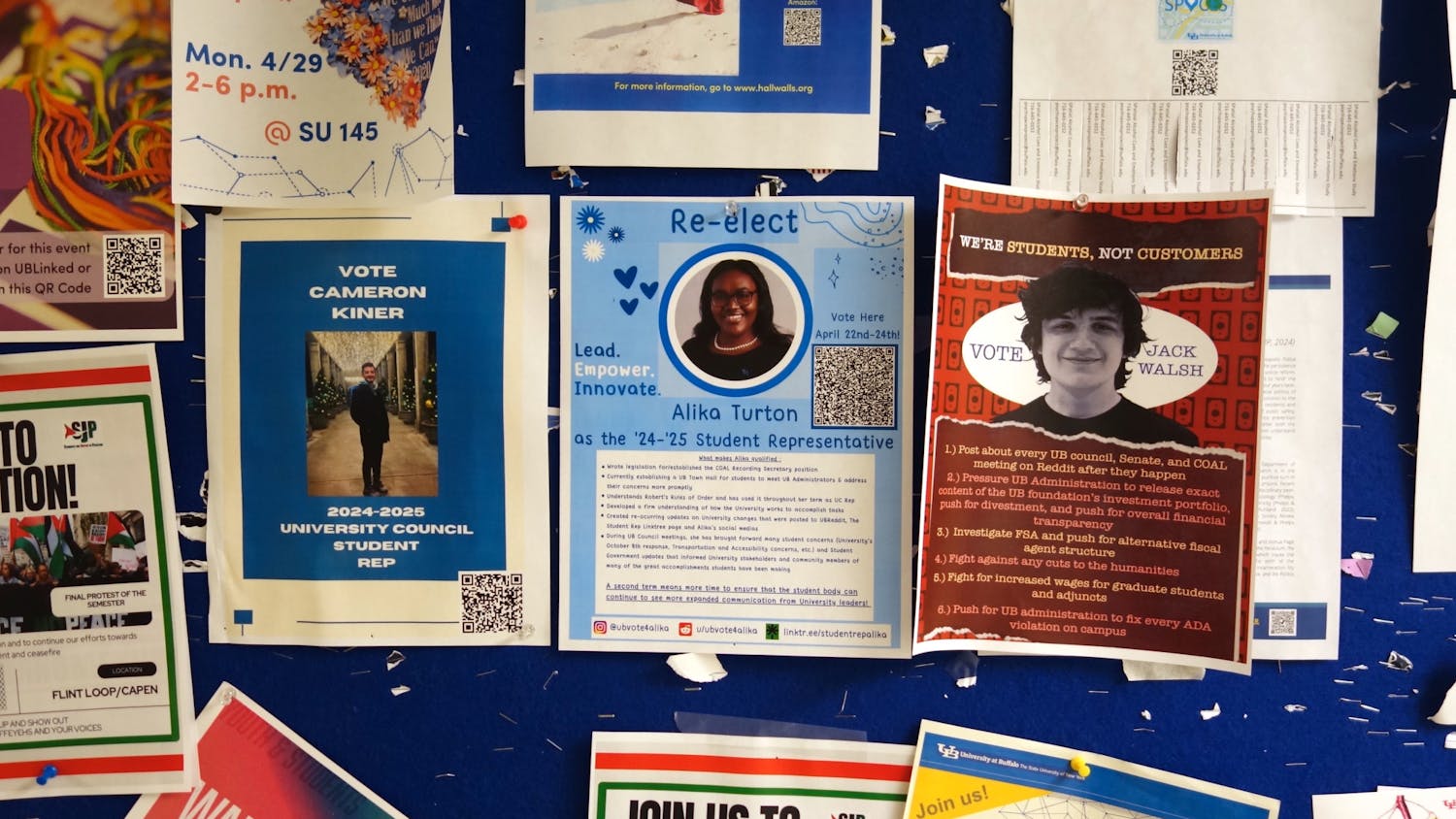Last spring, the world joined together because of one movement: KONY 2012. Millions watched a 30-minute video that soon became one of the most viral videos on the Internet.
Many Americans, especially the younger generations, rose for a cause and used the power they have to make a change - all because of one man: Joseph Kony.
On Wednesday night, UB Girl Effect did its part in reviving Invisible Children's mission by screening the organization's latest video, Move, which gives a behind-the-scenes look at the aftermath of KONY 2012 and its creator, Jason Russell. After the screening, a question-and-answer session took place featuring a survivor from Uganda and members of the Invisible Children.
Joseph Kony, a man with the blood of many Ugandan people on his hands, heads the Leader Resistance Army (LRA). Much of that blood comes from children whom he has trained as his soldiers to murder, rape, mutilate and slaughter Ugandan people for the past 26 years. The kids who were allegedly kidnapped by Kony and thrown into his army are called the "invisible children."
"Where you live shouldn't determine whether you live," said Santo, a survivor of Joseph Kony's oppression in Uganda and guest speaker at the Girl Effect movie screening Wednesday night. Santo has journeyed with Invisible Children and KONY 2012. He shared his story after the documentary screening.
"Everyone at Girl Effect supports not only girls' rights but human rights, and this is something that touched our hearts and the hearts of a lot of UB students when they saw the Kony video," said Meghan Young, UB Girl Effect's co-founder and secretary. "Unfortunately, we've seen a fizzle in the enthusiasm that surrounded this issue, so we're all excited to have them on campus to bring back that spark."
Many were unaware of the atrocious acts done to the Ugandan people until Russell, the creative director of KONY 2012, changed that. He did so by "making [Joseph Kony] famous" in his video, which featured Russell's son and Jacob, one of the survivors of Kony's violence.
"The world was watching and the world was doing something," Russell said in Move. "I know for a fact that nobody, I mean nobody, saw what was coming."
Views increased from 500,000 views, which was the organization's original goal, to over 100 million views by the end of the first week it aired.
"People need to realize that there are people out there who are doing very bad things, and we can't always be so focused on ourselves and our country," said Bianca Cagara, an undecided freshman and attendee of the Move documentary screening. "We should think about the others who are suffering."
Though some news press gave praise to the video and its success in rallying the young generation and the public to make change, there were many skeptics who had a different opinion, according to an Al Jazeera reporter in the documentary.
"[The video] was manipulating the viewers' emotions," the Al Jazeera reporter said.
In Move, viewers see a different side of the creators behind KONY, along with the criticisms and struggles they endured while the movement took a beating from the media.
"We didn't see the tsunami coming," Russell said. "We just turned around and we were all under water."
Not only did the team take a hit from all of the skepticism and negative press; the victims of Kony, like Russell's friend Jacob, were also offended by being portrayed as liars.
"When you wake up and you find someone writing 'KONY 2012 is a scam, the LRA leader has died a long time ago,' I was offended because I cannot wake up and start telling lies about my brother being killed," Jacob said in Move. "Why would I do that? They abducted me and they killed my brother with the machete."
All the fame and negativity took a toll on Russell and his well being. He describes his anxiety in Move.
"If you're put in a position where you're asked to give answers to questions you've answered a dozen times before, your mind starts to lose track of where you are, if you've slept, who's for you, who's against you," Russell said. "This is where my anxiety comes from: total fear."
A few days after being advised by his team to take a break from the media and deal with his anxiety out of the limelight, police detained Russell for walking down the street and screaming while wearing only his underwear. Russell suffered a mental break down and was hospitalized for treatment.
"I think that it's a really positive movement and I feel bad about the whole situation that happened to Jason [Russell] with the negative media," said Rachel Welch, a freshman psychology major. "Even I fed into the media, but watching this video actually changed my perspective a lot."
After its negative turn, KONY 2012 was at a standstill.
"I'm so sorry to the thousands of people who were confused, who were scared and who didn't trust us anymore because of what happened, and I still live with that every day," Russell said. "The name of the campaign around KONY 2012 was 'Stop at Nothing,' and we had to prove that that's possible and we're still proving that today. We will move forward and we will still pursue the capture of Joseph Kony and his top commanders."
In Move, Russell and his team do exactly that: stop at nothing to continue the progress of KONY 2012 and its next move - to take over Washington, D.C. on Nov. 17. The organization hopes to pressure international leaders to show up and keep their promise of capturing Joseph Kony and the LRA once and for all.
Email: features@ubspectrum.com





